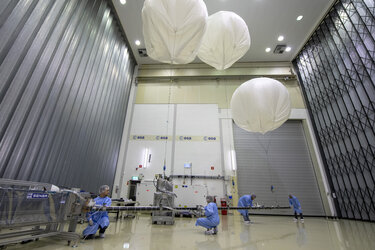
Juice magnetometer boom integrated
The 10.6 m-long magnetometer boom of ESA’s Jupiter Icy Moons Explorer (Juice) has been attached to the spacecraft, a major step in the integration process as the mission prepares for launch next year.
Once in the Jovian system the mission will make detailed observations of the giant gas planet Jupiter and its three large ocean-bearing moons – Ganymede, Callisto and Europa – with a suite of remote sensing, geophysical and in situ instruments. The mission will investigate the emergence of habitable worlds around gas giants and the Jupiter system as an archetype for the numerous giant exoplanets, now known to orbit other stars.
Part of the Juice instrument package are the magnetic and electric field sensors, hosted on the end of the magnetometer boom. The boom is folded in three parts and packed against the side of the spacecraft for launch; in stowed configuration it is 3.8 m long. Once unfolded in space, the sensors will extend clear of the main body of the spacecraft, allowing very accurate measurements without magnetic interference from the spacecraft itself.
The boom’s instruments will measure Jupiter’s magnetic field, its interaction with the internal magnetic field of Ganymede, and will help study the subsurface oceans of the icy moons. Ganymede is unique in the Solar System in that it is the only moon to have a magnetosphere.
This timelapse shows the integration of the boom in the Airbus cleanroom at Friedrichshafen, Germany in February 2021.






